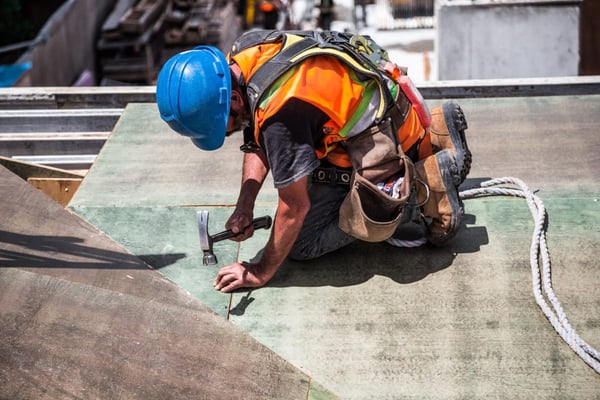In the last several years, residential construction has been booming, with gleaming condos springing up in cities across North America and single family homes cropping up in subdivisions throughout the suburbs. Plus, fix-flipping is very popular. And yet, the construction industry is experiencing a shortage of skilled labor. But as more young people face the hardships of student debt and grow tired of the monotony of corporate career options, the desire to enter the construction industry may soon be growing. After gaining on-site construction experience and learning the ins and outs of residential building, there is the potential to become a skilled builder and/or fix flipper. Below, we’ll outline these and more benefits in greater detail.
Because of the current job shortage in construction, there is job security. And, according to careersinconstruction.ca, “The demand for skilled workers has been increasing steadily for more than a decade, even during periods of economic decline. Plus, over the next 10 years, around 260,000 baby boomers will be retiring from the construction industry alone.” What’s more, the construction industry offers countless options for skilled jobs and the ability to specialize. Carpentry is often the first role that comes to mind, but there are also masons, roofers, electricians, plumbers, machine operators, and even experts in wood refinishing just to name a few. Learning any of these skills is in demand, which means the job is secure. Furthermore, even if you choose to specialize, the very nature of construction means there is a lot of overlap between different trades, allowing you to pick up even more skills and apply them to bigger, more ambitious projects of your own in the future.
Not only is construction secure, it is also well paying with room for growth. The average annual income across most trades is around $50,000. And with more experience and more specialized skills, that number goes up. Plus, it is an industry in which climbing the ladder can happen relatively quickly, with the opportunity to ascend to positions such as foreman, supervisor, construction manager, or project manager. All of this helps you learn how the industry works as a whole, and can help you break into fix-flipping and investing. In fact, a lot of people who begin flipping do so as a passion project. But if you have real, on-the-job construction skills acquired over many years of experience, you can really have the upper hand if you choose to go into fix-flipping. Plus, the countless other construction experts you meet along the way can become valuable contacts for you in the future should you choose to embark on bigger projects or even start your own company.
Construction is also an active, physical job where no two projects are alike. This is good for both the mind and body, as it is a job that demands physical fitness but also provides inspiration and requires creative thinking - after all, what is the construction industry if not solving problems with tangible solutions! Stephen Hull, an electrical foreman, described why he likes his job: “I cannot imagine working in the same place day in and day out for 40 years!” It is also a satisfying line of work in which the results of one’s efforts are not only plain to see, but also enhance the lives of others.
Usually, entering the construction industry requires no expensive higher learning. While certain trades do require attending a trade school or acquiring certification, the costs are minimal compared to most college programs. And whether or not a trade requires schooling or not, anyone in the construction industry will tell you that the most valuable learning is on-the-job training. Whether that means starting out as an apprentice or general laborer, the experience acquired on a construction site directly translates to greater skills and more opportunities.
Those skills and opportunities can give you invaluable insight into flipping a home and working with the contacts you’ve built strong relationships with over the years. And by working in an ever-changing industry, you’ll also learn what to look for in projects of your own. What’s a good investment vs a money pit? Which areas are growing and which are declining? Which construction trends are picking up steam? All of these are questions you’ll be able to answer by choosing an industry with such dynamic growth and numerous pathways to success.

Recent Posts
- Spec Construction Loans: A Spec Line of Credit Is Worth the Paperwork
- Spec Homes and Pre-Sale Homes: The Relative Benefits for a Spec Builder
- How a Lender Sees Spec Construction Success: Insights for the Investor Builder
- How Is a Spec House Different From Other Kinds of House Construction?
- How a Private Lender Compares to a Bank Lender for a Spec House Construction Loan
